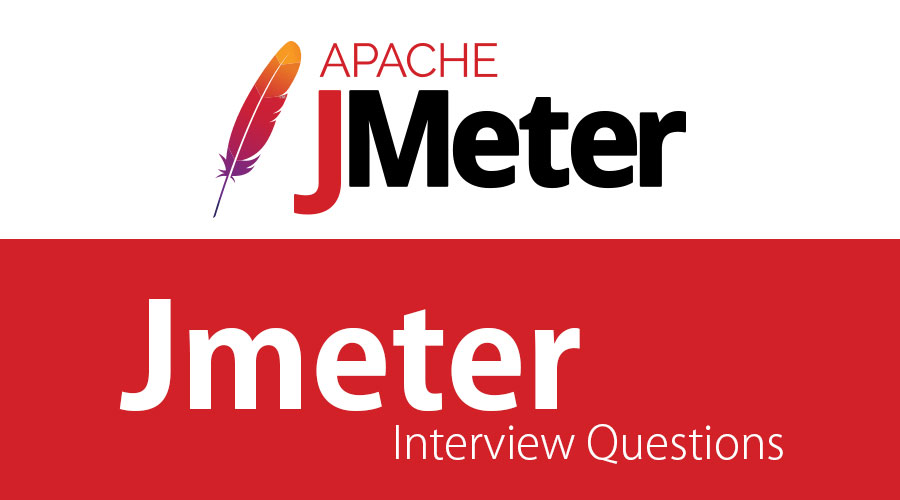Updated June 23, 2023

Introduction To JMeter Interview Questions And Answers
JMeter is an open-source desktop application written in Java. It is widely used for load testing, performance testing, and functional testing of web applications. The source code of JMeter is available for download and modification as needed. The advantages of JMeter are open-source, easy to use, platform-independent, ultimate testing, robust reporting, etc. The disadvantages are memory consumption, only supporting web applications and lack of JavaScript. Most businesses rely on JMeter for performance testing. As a result, knowledge of JMeter is a must to succeed in the interview.
This article contains the top 10 most frequently asked JMeter interview questions and answers. This will help the candidate to succeed in the interview.
Part 1 – Basic JMeter interview questions with answers
1. What is the use of the regular expression in JMeter?
Answer:
Regular expressions in JMeter extract some values dynamically from the response. The values act as the intermediate results in subsequent requests to the server or save them for reporting purposes. Both pre-processors and post-processors use regular expressions.
2. Explain the flow of the Test script recorder.
Answer:
HTTP(s) Test Script Recorder records all the HTTP(s) requests going to the server from the application. The following changes are made in the JMeter application to make it work.
- Add HTTP(s) test script recorder https://www.educba.com/full-form-of-http/to the workbench.
- Enter the port number to start your proxy server.
- Select a workbench or add a recording controller in the test plan and select the same target for storing all recordings in one place.
- Start the proxy server.
- Configure the browser with manual proxy settings with port numbers the same as in the test script recorder.
Let us move to the next JMeter Interview Questions.
3. Can we run selenium scripts on JMeter? If yes, how?
Answer:
Yes, running selenium scripts in JMeter is possible to get their performance. There are two ways of doing it. One way is to use JUnit libraries to build selenium scripts, save them as Jars, and copy them in the JMeter directory. And then, add the JUnit sampler to the test plan and import the Jar file. Another way is by adding a web driver sampler plugin to the JMeter ext folder and restarting the JMeter. Write the selenium code in the web driver sampler to see the performance.
4. What are the roles of the listeners in the JMeter?
Answer:
The role of the listeners in the JMeter is to save the outcomes of the test after viewing the same. They are very useful in tabular and graphical analysis of the outcomes. Commonly used listeners are the aggregate graph, view results tree, an aggregate report.
5. What are the main parts of the thread group?
Answer:
The main parts of the thread group in the JMeter are a controller, sampler, assertion, configuration elements, and listeners. The detailed description is as follows:
- Controller: It controls the flow of the thread group.
- Sampler: It sends different requests to the server.
- Assertion: This is responsible for time management as it checks whether the response is there for a request within a specific time.
- Configuration elements: It manages the information related to the requests integrated with the samplers.
- Listener: It saves the final output of the task.
Part 2 – JMeter Interview Questions (Advanced)
6. What is a Post-processor in JMeter?
Answer:
The post-processor in the JMeter is used after the accomplishment of the sampler request. That is, it takes any action in response to a request. It is simple to use to extract values from the sampler response.
7. Explain the execution order of the test elements.
Answer:
The execution order of the test elements is as follows:
- Configuration elements
- Pre-processors
- Timers
- Samplers
- Post-processors
- Assertions
- Listeners
8. How to manage cookies and sessions in the JMeter?
Answer:
We can manage cookies and sessions in the JMeter by using config elements such as HTTP cache manager which can clear the cookies in every iteration and allows users to add user-defined cookies. It also helps to clear the cache as per user requirements in the load tests, and it limits the number of elements that can be stored in the cache. These config elements can be attached to the listener.
9. What is the purpose of a workbench in JMeter?
Answer:
The workbench is a storage area for storing and adding the components to the test plan as needed. The components of the workbench with the test plan are temporarily saved. It has to save as test fragments. The HTTP request test script recorder is the essential part of the workbench for storing HTTP request recordings, which later measures the performance.
10. What are the types of controllers in the JMeter?
Answer:
Controllers in the JMeter control the flow of the request. Some of the controllers in the JMeter are as below:
- While controller
- Recording controller
- Transaction controller
- Simple controller
- Loop controller and
- Module controller
- IF controller
Finally, it’s an overview of JMeter and the most frequently asked topics in the interviews. I suggest you go through the remaining concepts in addition to this article to clear the interview 100 percent. All the best for your interview.
Recommended Articles
This has been a guide to the list of JMeter interview questions and answers so that the candidate can crack the interview easily. You may also look at the following articles to learn more –

